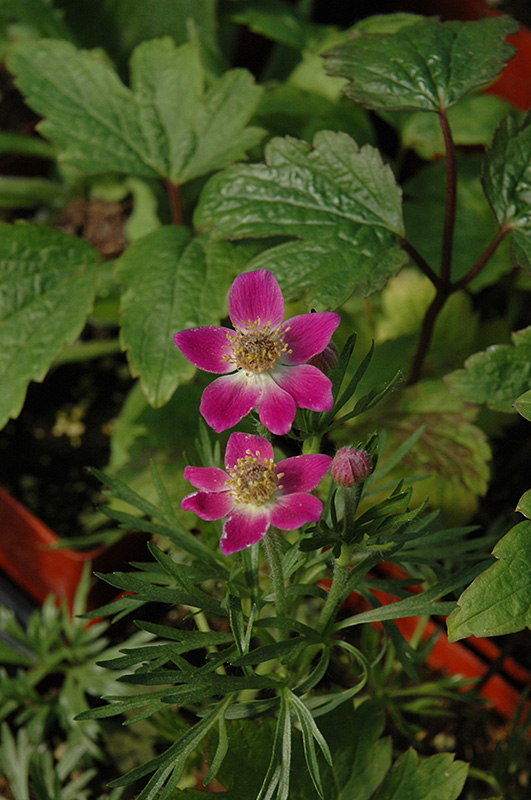Height: 10 inches
Spread: 12 inches
Sunlight:
![]()
![]()
Hardiness Zone: 3a
Description:
Low mounding and early blooming, this selection looks stunning in garden beds, wildflower gardens or in borders; fuchsia colored blooms sit atop of deeply cut, ferny green leaves; low maintenance, deadhead to control self-seeding
Ornamental Features
Cutleaf Anemone has fuchsia buttercup flowers with yellow eyes and white centers at the ends of the stems in mid spring, which are interesting on close inspection. The flowers are excellent for cutting. Its deeply cut ferny leaves remain emerald green in color throughout the season.
Landscape Attributes
Cutleaf Anemone is an open herbaceous perennial with a mounded form. It brings an extremely fine and delicate texture to the garden composition and should be used to full effect.
This plant will require occasional maintenance and upkeep, and usually looks its best without pruning, although it will tolerate pruning. It is a good choice for attracting bees and butterflies to your yard, but is not particularly attractive to deer who tend to leave it alone in favor of tastier treats. Gardeners should be aware of the following characteristic(s) that may warrant special consideration;
- Self-Seeding
Cutleaf Anemone is recommended for the following landscape applications;
- Rock/Alpine Gardens
- Border Edging
- General Garden Use
- Naturalizing And Woodland Gardens
Planting & Growing
Cutleaf Anemone will grow to be about 8 inches tall at maturity, with a spread of 12 inches. Its foliage tends to remain low and dense right to the ground. It grows at a slow rate, and under ideal conditions can be expected to live for approximately 5 years. As an herbaceous perennial, this plant will usually die back to the crown each winter, and will regrow from the base each spring. Be careful not to disturb the crown in late winter when it may not be readily seen!
This plant does best in full sun to partial shade. It does best in average conditions that are neither too wet nor too dry. It is not particular as to soil type or pH. It is somewhat tolerant of urban pollution. This species is native to parts of our region. It can be propagated by division.
